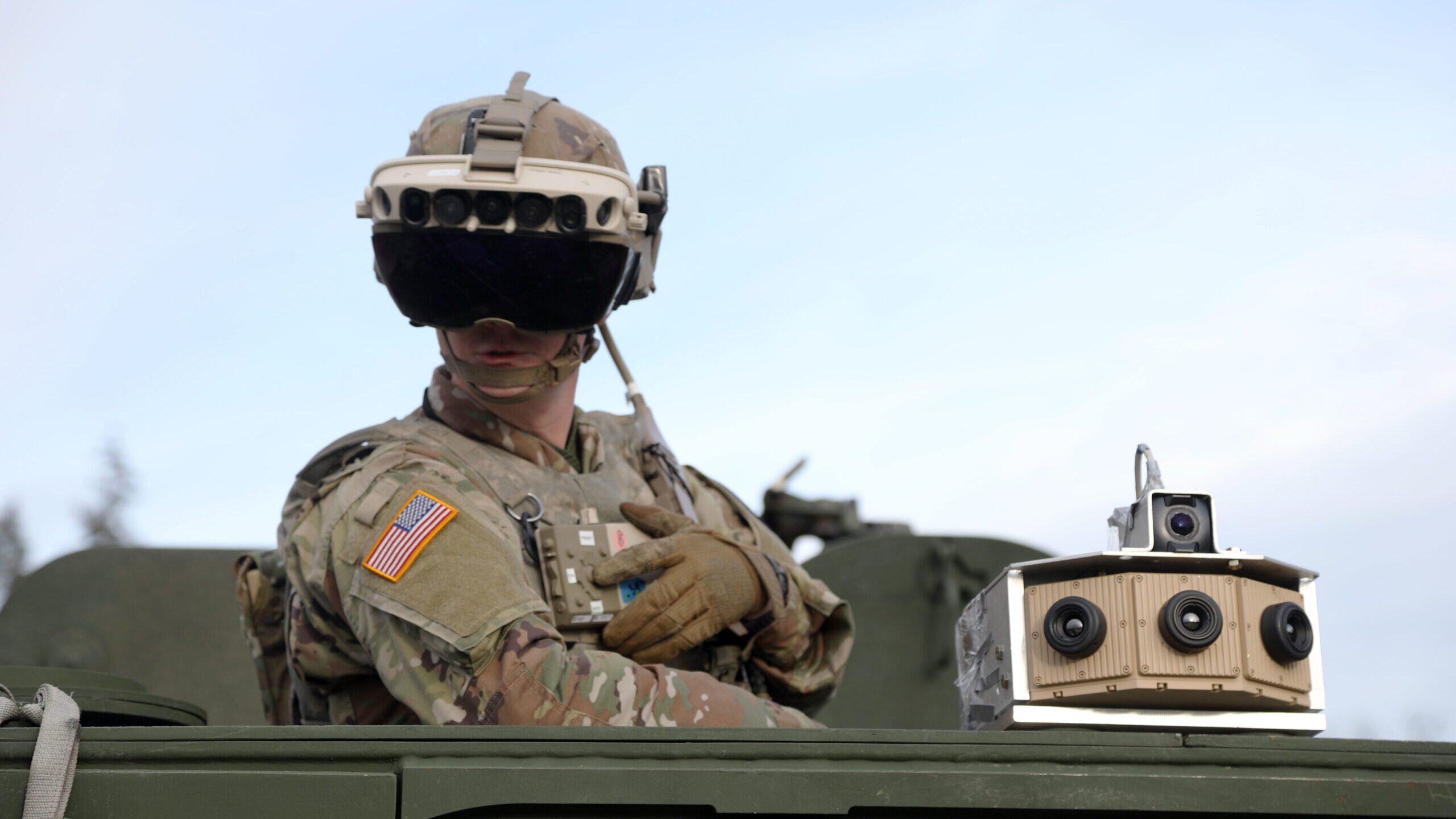
Soldier dons the Integrated Visual Augmentation System Capability Set 3 hardware while mounted on a Stryker in Joint Base Lewis-McCord, WA. (Courtney Bacon/US Army)
WASHINGTON: The US Army’s top acquisition official said today that he’s “encouraged” by the recent operational test of the service’s signature Integrated Visual Augmentation System despite some “challenges.”
The IVAS program, essentially battlefield augmented reality goggles made by Microsoft, underwent a recent operational test that the Army’s top civilian has said will determine the future of the program. The official results haven’t been revealed, but in a roundtable with reporters today, Assistant Secretary of the Army for Acquisition, Logistics and Technology Doug Bush was optimistic.
“I think there’s further work to do to improve the system. But we saw a lot of positive things as a test,” Bush said, noting one area for improvement was how the goggles fit on the soldier. “We’re in a position where I’m encouraged.”
Last fall, the Army delayed the IVAS operational test by several months after identifying issues with the goggles. Bush said that the final report from the operational test won’t be sent to lawmakers on Capitol Hill until “late summer, early fall” — the same time the Army’s adjusted timeline shows the service equipping units with IVAS.
Related: Awaiting IVAS verdict, SASC directs Army to toy with ‘mixed-equipping’ night vision goggles
However, Bush said that the service doesn’t have to wait for that final report to be sent to the Hill to make a production decision. He said the service is “actively” having discussions about the future of the program based on the results and feedback from the test so far.
“That final decision on exactly how we’re going to move forward will be made by the Secretary [of the Army Christine Wormuth],” Bush said. “I’m working on a recommendation with a lot of teammates in the Army on getting her our recommendation on how to do that.”
FLRAA Decision Could Slide
As for the Future Long-Range Assault Aircraft (FLRAA) competition, Bush said in congressional testimony in May that the service aimed to award the UH-60 Black Hawk replacement contract in September. During today’s event, Bush acknowledged that the award could slip into October.
“The goal would still be the end of fourth quarter [FY]22, and perhaps early first quarter [FY]23,” Bush said. “I don’t have an exact date yet, so that is kind of the rough timeline we’re looking at.”
Bell Textron and a Sikorsky-Boeing team are competing against each other for the FLRAA contract, and Sikorsky and Bell are also facing off for the Army’s Future Attack Reconnaissance Aircraft. Bell and Sikorsky-Boeing offered two different designs for the FLRAA contest. Bell’s offering its V-280 Valor tiltrotor aircraft, while Sikorsky-Boeing’s proposal is its SB>1 Defiant, which features coaxial rotors.
“The source selection authority is focused on making sure the Army’s requirements are met for this platform,” Bush said. “That is the key thing. We have to get that decision right. And I’m confident we have source selection activity in place that’s going to get that right.”
Move over FARA: General Atomics pitching new Gray Eagle version for armed scout mission
General Atomics will also showcase its Mojave demonstrator for the first time during the Army Aviation Association of America conference in Denver, a company spokesman said.


























